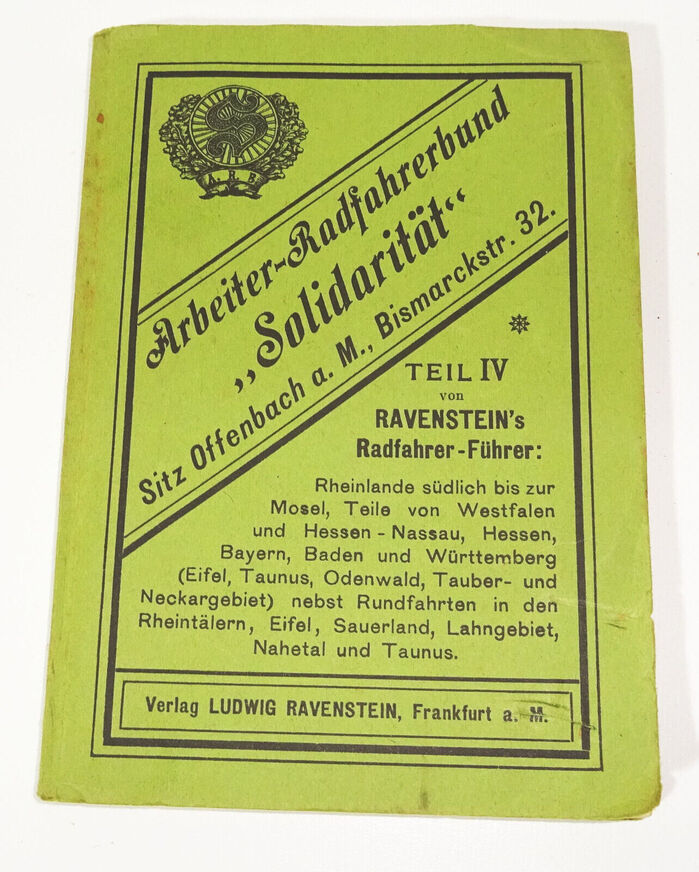Ravenstein’s Radfahrer-Führer, Arbeiter-Radfahrerbund “Solidarität” edition



Breite magere Grotesk (Bauer) (Sample unavailable)
Ravenstein’s Radfahrer-Führer is a series of cycling guides issued around 1910 by Ravensteins Geographische Verlagsanstalt in Frankfurt am Main, Germany. Established in 1830 by Friedrich August Ravenstein (1809–1881), the cartographic publisher was run by his son Ludwig (1838–1915) at the time.
The guides were edited by Ernst Ludwig Richter, long-time chairman of the touring committee of the German Cycling Federation. Shown here are volumes IV, V, and VI, each of which covers certain regions of Germany and neighboring countries. This specific edition was distributed (or endorsed?) by the Arbeiter-Radfahrerbund „Solidarität“. This association is known today as Rad- und Kraftfahrerbund „Solidarität“ Deutschland 1896, or RKB for short. From Wikipedia (translated):
The RKB was founded in Offenbach am Main in 1896 as the “Arbeiter-Radfahrerbund Solidarität”. An initial founding act in Leipzig in 1893 had still been banned despite the repeal of the Socialist Law. The national office was initially located in Chemnitz, but the association moved its headquarters to Offenbach am Main in 1907. In the Weimar Republic, the ARB was the largest cycling association in the world with several hundred thousand members. The name Solidarität (Solidarity) was intended to express that this association saw itself as part of the workers’ movement.
The association’s name and its address are shown at a dramatic angle, set in two italic typefaces: Reklame-Kursiv by the Krebs foundry and (one of the many versions of) Halbfette Cursiv-Grotesque, a design that, according to research by Dan Reynolds, originated at Juxberg-Rust in 1874. The upright grotesks look like Breite magere Grotesk and Neueste schmale Grotesk, both by Bauer.
This post was originally published at Fonts In Use


